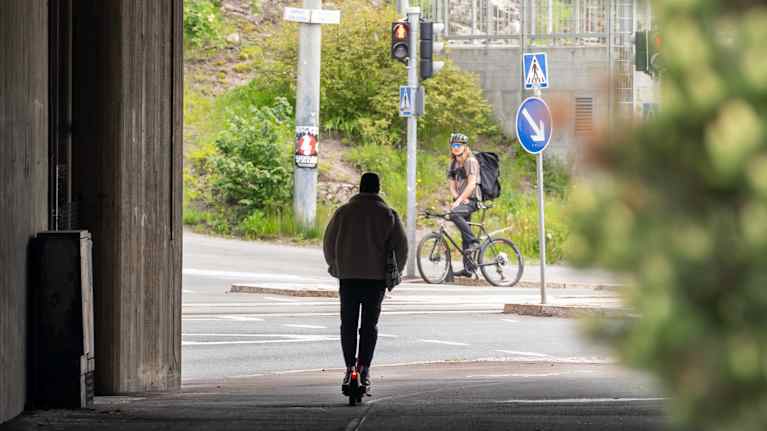A city traffic engineer credits the success to lower speed limits and smarter design.

Helsinki has not recorded a single traffic fatality in the past 12 months, city and police officials confirmed this week.
The city's most recent fatal accident occurred in early July 2024 on Keinulaudantie in the city's Kontula district.
Authorities are calling the situation exceptional.
"A lot of factors contributed to this, but speed limits are one of the most important," said Roni Utriainen, a traffic engineer with the city's Urban Environment Division.
Slower speeds, safer streets
According to Utriainen, more than half of Helsinki's streets now have a speed limit of 30 km/h. Fifty years ago, that proportion featured 50 km/h limits.
Earlier this summer, Helsinki decided to lower speed limits near schools to 30 km/h, a measure that is set to take effect as the academic year begins.
Smarter design and better enforcement
Street design has also played a key role. Pedestrian and cycling infrastructure has been significantly upgraded in recent years. In addition, cooperation with traffic police has intensified and more traffic cameras and automated enforcement systems have been introduced.
"Public transport in Helsinki is excellent, which reduces car use, and with it, the number of serious accidents," Utriainen noted.
Vehicle technology has also improved, making both cars and other personal transport options safer than ever.
The positive trend extends beyond fatalities. In the past year, there were 277 injury-causing traffic accidents in Helsinki — a sharp contrast to the nearly 1,000 injurious accidents recorded annually in the late 1980s, when traffic deaths in the city commonly approached 30 per year.
Long-term effort pays off
Helsinki's current traffic safety strategy, covering 2022–2026, is nearing completion. It has focused on improving safety for children, youth, pedestrians and cyclists with safer crosswalks and smarter intersection design.
Much of the planning has been data-driven, enabled by improved traffic monitoring tools.
Utriainen credited the improvement to decades of sustained effort.
"The direction has been positive for years," he said, pointing out that no pedestrians were killed in Helsinki traffic in 2019 either.
Traffic education has also improved, but Utriainen emphasised that credit belongs to everyone on the road — motorists, cyclists and pedestrians alike.
One newer challenge has been the widespread use of electric scooters.
"They became popular around five years ago, somewhat unexpectedly. But since then, many solutions have been put in place," Utriainen said.
The EU's long-term goal is zero traffic deaths by 2050 — a policy dubbed "Vision Zero." Is it achievable or wishful thinking?
"For us, it's more about how the goal guides our everyday actions," said Utriainen. "We aim to assess all our decisions based on their long-term impact."
.png)



